Even though the thermometer encourages you to stay indoors, February is a great month to get outside and get your hands dirty. You can start plants in nearly every category this month as seeds or small transplants, and you can work and improve the soil in preparation for spring planting. So brave the chill and promise yourself a cup of hot tea at the end of the afternoon — your garden awaits, and it will thank you and pay you back in spades in a couple of months.
More regional garden guides
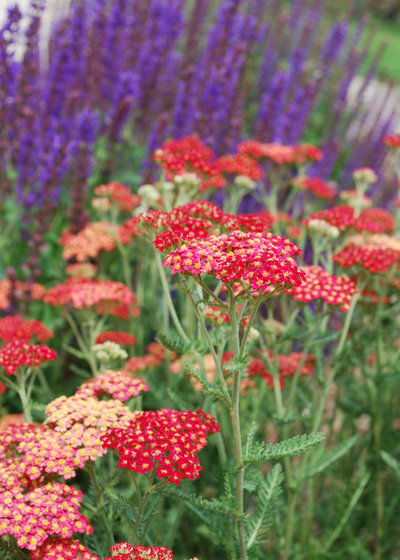
Jocelyn H. Chilvers
Plant perennials and annuals. Many perennials and annuals can be directly planted into the garden now for late-winter and early-spring color, as well as color throughout the rest of the growing season.
Plant Yarrow
(Achillea millefolium), Turk's cap
(Malvaviscus drummondii), blackfoot daisy
(Melampodium leucanthum), zexmenia
(Wedelia texana), poppies
(Papaver somniferum), snapdragons (
Antirrhinum spp), stock (
Matthiola spp), alyssum
(Lobularia maritima), delphiniums (
Delphinium spp
), dusty miller
(Senecio cineraria) and English daisies
(Bellis perennis).
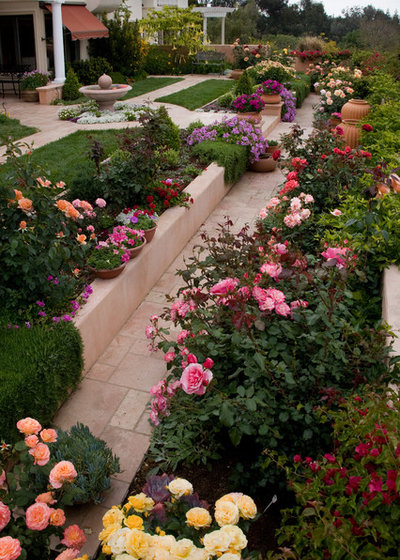
Margie Grace - Grace Design Associates
Prune roses. Valentine's Day is the traditional time to prune your roses, so get out your hand pruners and rose gloves. Remove dead canes (branches) and any branch that crosses over another or grows to the center of the plant, and then prune for shape.
Pruning your roses this month will ensure that your plant will have more lush growth, an attractive shape and a profusion of blooms during the coming months.
Tutorial: See how to prune roses, step by step
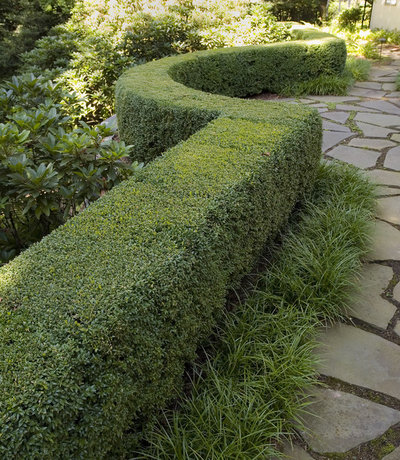
Liquidscapes
Shear and shape plants. Prune immature fruit trees if necessary and shear evergreen shrubs to maintain shape. Ornamental grasses, as well as perennials like esperanza
(Tecoma stans), firebush
(Hamelia patens) and salvia
(Salvia gregii), can be cut back to about 12 inches
. Herbs like rosemary, oregano, savory and thyme will also appreciate a late-winter trimming. Be sure to avoid pruning your spring-flowering trees and shrubs at this time, as doing so will remove their flower power until next year.
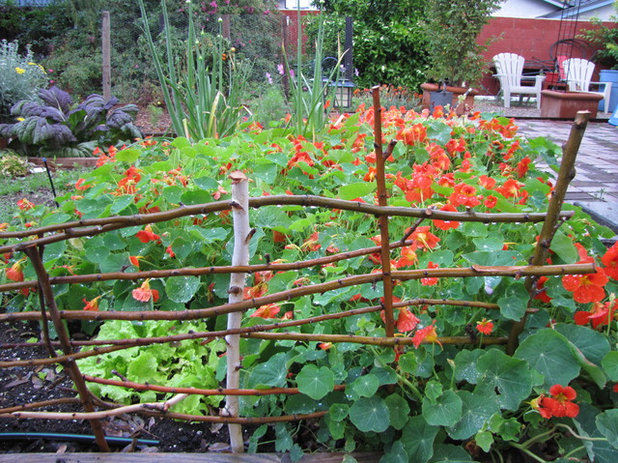
Jean Marsh Design
Sow seeds. Many herbs, vegetables and flower seeds can be sown directly into the garden soil this month. Try sowing seeds for chives, cilantro, dill, parsley, sweet peas, nasturtium, cosmos, beets, carrots, endive, kale, lettuce, parsnips, mustard greens, peas, radishes, spinach, turnips and rutabagas. Seeds for tomatoes and peppers can be started indoors.
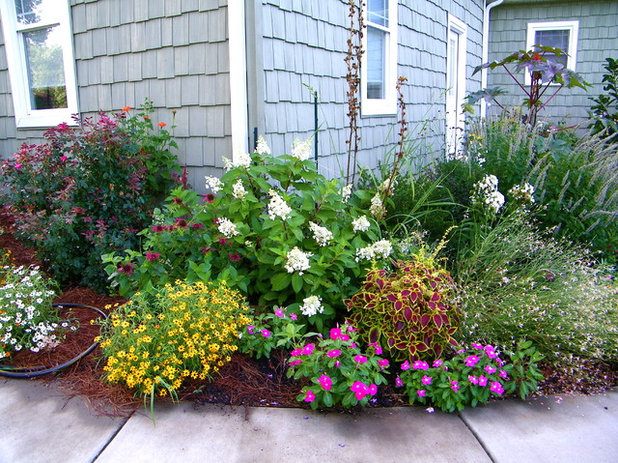 Fertilize flower and vegetable gardens.
Fertilize flower and vegetable gardens. Early in the month, work some compost or organic fertilizer into your flower and vegetable beds so the soil is ready to go when spring hits. Try compost teas, liquid fertilizers, worm castings, cottonseed meal or compost from your own compost pile. Rake the mulch to the side and work the fertilizer into the top couple of inches of soil, then rake smooth and replace the mulch.
Ask your nursery for a fertilizer recommendation — nobody knows the local soil and typical garden problems better than the staff at a good local garden center.
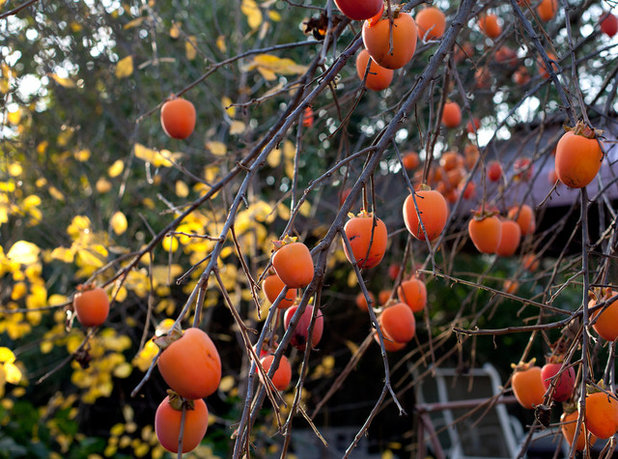 Establish fruit trees and plants.
Establish fruit trees and plants. Blackberries, dewberries, grapes, figs, pears, persimmons, strawberries and pomegranates can all be planted now, but be sure to choose the varieties that are best suited for your particular area. Your local nursery or extension office can provide recommendations for you, as well as the best times to plant them.
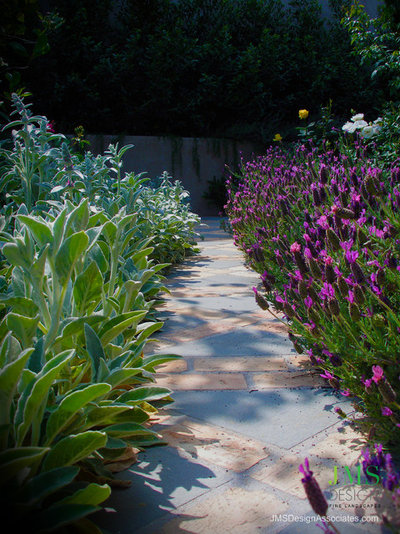
JMSDesignAssociates
Add herbs and vegetables. There's still time to get your cool-season veggies and herbs in the ground. Plant broccoli, asparagus, Asian greens, artichokes, cabbage, chard, collards, seed potatoes, onion sets, spinach, mustard greens and lettuce.
Herbs to plant include calendula, chives, cilantro, dill, lavender, rosemary, thyme, parsley, sage, fennel, sorrel and oregano. The sunnier the spot, the better the yield.
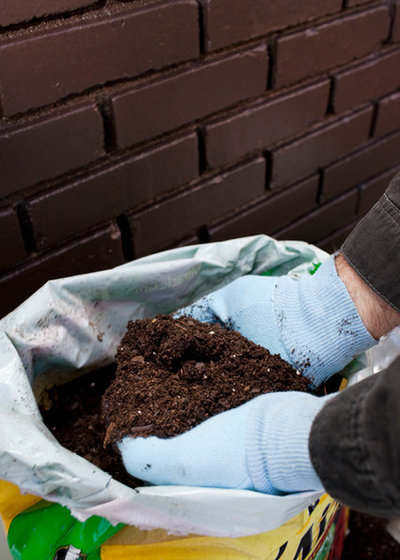
decordemon
Test your soil. Take samples of soil from different parts of your garden and have them tested for pH as well as levels of nitrogen, phosphorus and potassium. Most extension offices will perform the test for a fee, and the results will help you to know how to amend your soil if necessary. Some plants prefer a certain soil pH in order to bloom or thrive, so it's good to know what you are dealing with and make the recommended adjustments.
How to start your spring and summer crops indoors





